Korean porridge, known as juk, is a beloved comfort food in Korea and is especially popular during colder months or when someone's feeling under the weather. This warm and hearty dish is not only satisfying but also easy to digest and packed with nutrients. Whether made from rice, beans, or even seeds, there's a variety for every taste.
One of the most popular types of juk is dakjuk, or chicken porridge. Made by simmering chicken, rice, and vegetables, it offers a balanced, flavorful and soothing meal.
Juk isn't just about being nutritious and yummy; it also carries a deep cultural significance. In many Korean households, it's a staple for breakfast, a light dinner, or a hearty snack for cold weather. With its versatility and comforting nature, juk is a true gem of Korean cuisine.

Jump to:
- ⏳ The History and Significance of Juk in Korean Cuisine
- Types of Juk: From Dakjuk to Hobakjuk
- 🍗 Key Ingredients and Their Roles
- 💕 Health Benefits and Nutritional Value
- 💚 Healing Juk: A Go-To Meal for Recovery
- 🍲 Cooking Methods: Traditional Stovetop to Modern Instant Pot
- 😋 Classic Korean Porridge Recipe
- 🥕 Customizing Your Juk: Variations and Add-ins
- 🥘 Pairing Juk With Other Korean Dishes
- 📝 Storing and Reheating Tips
- ❓ Frequently Asked Questions
- 💬 Comments
⏳ The History and Significance of Juk in Korean Cuisine
Juk, or Korean porridge, has deep roots in Korea. It dates back to ancient times and was often made to feed the sick and elderly because it's easy to digest and comforting.
It isn’t just food; it’s a huge part of Korean culture. Families cook it for loved ones during illness or recovery, showing care and love. It’s also a common breakfast item that all age groups enjoy.
Korean porridge is made from ingredients like rice, beans, nuts, and even abalone. Different regions have unique variations. For instance, dakjuk is a chicken porridge popular in winter.
There's also pumpkin porridge, red bean porridge, and more. Each type has its own flavor and benefits. For example, pumpkin porridge is sweet and often enjoyed as a dessert.
Family recipes are passed down through generations, keeping the tradition alive. It’s a beloved dish that provides comfort and nutrition, capturing the essence of Korean home cooking.
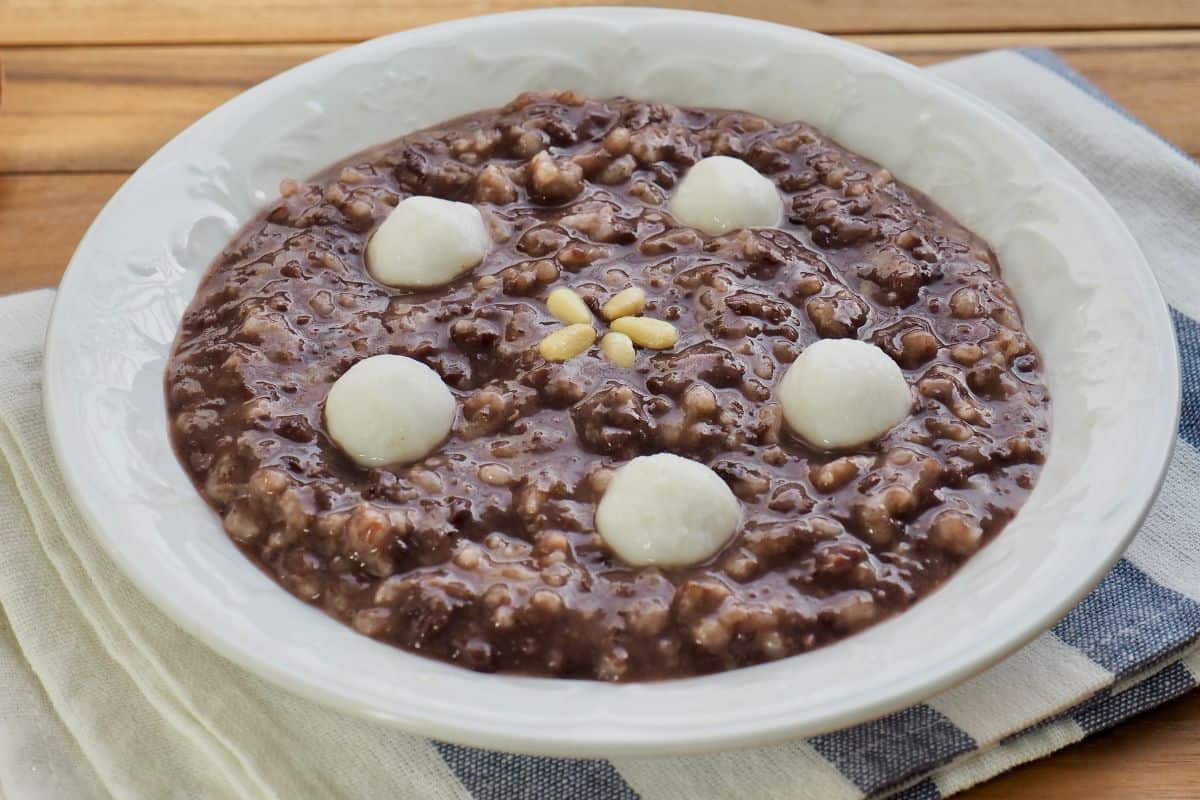
Types of Juk: From Dakjuk to Hobakjuk
Dakjuk (Chicken Porridge)
Dakjuk, or chicken porridge, is a comforting dish made with tender chicken pieces and rice. The process starts by soaking the rice and then stir-frying it in sesame oil until it turns translucent.
Chicken broth is added to cook the rice until soft. Vegetables like garlic and scallions are often included for extra flavor. This version of Korean chicken porridge is hearty and perfect for a warm, soothing meal.
Hobakjuk (Pumpkin Porridge)
Hobakjuk is a savory and slightly sweet pumpkin porridge known for its creamy texture and vibrant color. To make it, pumpkin is first steamed or boiled until soft.
The pumpkin is then mashed and combined with soaked and partially cooked rice. Sometimes, sugar and salt are added to balance the flavors. Hobakjuk is often served as both a snack and a meal.
Jeonbokjuk (Abalone Porridge)
Jeonbokjuk features abalone, a type of shellfish, which adds a rich and briny taste to the porridge. This luxurious dish is made by cooking abalone pieces with rice soaked in water.
The abalone and rice mix is then simmered in a savory broth, often flavored with sesame oil and garlic. People enjoy jeonbokjuk for its delicate and unique flavor along with its smooth texture, making it a sought-after delicacy.
Patjuk (Red Bean Porridge)
Patjuk is a creamy red bean porridge commonly eaten during the winter solstice. It's made from red beans that are boiled and then blended into a smooth paste. This paste is mixed with soaked rice and simmered until the rice is cooked and thickened.
Sweet rice balls, known as saealsim, are often added as a chewy contrast. Patjuk’s mildly sweet and earthy flavor makes it a beloved treat during colder months.
🍗 Key Ingredients and Their Roles
Rice Varieties: Glutinous vs. Short-Grain
Rice is the star of Korean porridge. The 2 main types used are glutinous rice and short-grain rice.
Glutinous rice, also known as sweet rice, is sticky when cooked. This stickiness gives the porridge a creamy texture, making it ideal for dishes requiring a smooth and thick consistency.
Short-grain rice is less sticky but still holds together well. It provides a slightly different texture, making the porridge less dense. This variety is common in many Asian rice dishes.
Using a mix of both can create a balanced texture. Both types absorb flavors well, making them perfect for soaking up the rich broths and seasonings.
Proteins: Chicken, Beef, and Seafood
Chicken, beef, and seafood are popular proteins in juk.
Chicken is often used for its light flavor and tender meat, which blends seamlessly with the rice, making the dish comforting and easy to digest. Chicken broth, made with bones, adds depth to the porridge.
Beef is another favorite. It offers a richer taste and a heartier texture. Using beef broth can give the porridge a robust flavor, perfect for those looking for a more substantial meal.
Seafood, such as shrimp or fish, introduces a different layer of taste. The natural brininess of seafood enhances the porridge's flavor, making it unique and enjoyable. Seafood porridge is often lighter but still very flavorful.
Seasonings and Aromatics
Seasonings and aromatics play a crucial role in enhancing the flavor of juk. Key ingredients include sesame oil, garlic, ginger, green onions, soy sauce, salt, pepper, and sesame seeds.
Sesame oil adds a nutty aroma and richness. Garlic and ginger provide warmth and a bit of spiciness. They're usually cooked with rice at the beginning to infuse their flavors thoroughly.
Green onions add a fresh, slightly pungent taste. They're often used as a garnish but can be cooked with the porridge for extra flavor.
Soy sauce, salt, and pepper season the porridge, with soy sauce offering a salty and umami taste. Sesame seeds give a pleasant crunch and a mild nutty flavor when sprinkled on top.
Each ingredient works together to create a balanced, flavorful, and aromatic dish, making Korean porridge a delightful meal for any time of day.
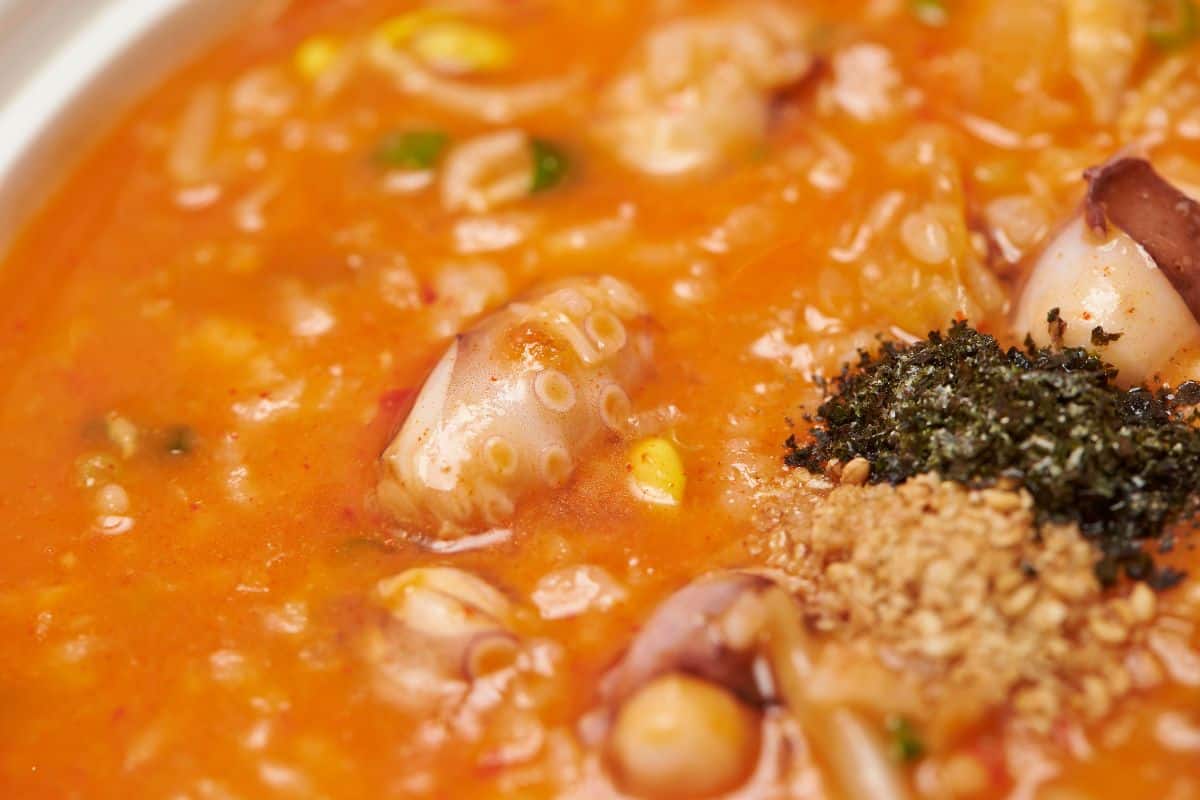
💕 Health Benefits and Nutritional Value
Key Nutrients
- Protein: Chicken porridge, like dakjuk, contains shredded chicken, providing a good source of protein. This makes it an excellent choice for a post-exercise meal or daily protein intake.
- Vitamin A: Carrots and other vegetables in the porridge add vitamin A, which is beneficial for vision and immunity.
- Iron and Calcium: These minerals are present in ingredients like spinach and sesame seeds, supporting bone health and preventing anemia.
Nutrition Facts
| Nutrient | Amount per Serving |
|---|---|
| Calories | ~150 kcal |
| Protein | ~10g |
| Carbohydrates | ~25g |
| Fat | ~3g |
| Vitamin A | ~20% DV |
| Iron | ~10% DV |
💚 Healing Juk: A Go-To Meal for Recovery
Soothing the Ill and Elderly
When people are under the weather or recovering from an illness, juk is a comforting choice. The soft texture makes it easy to eat and digest without straining the stomach. Chicken or beef can be added for protein, giving the body essential nutrients to heal.
Juk is particularly beneficial for the elderly. Since they might have trouble chewing or digesting tougher foods, this porridge offers a nourishing alternative. Ingredients like pumpkin and jujube can be included to add vitamins and minerals. Some versions even incorporate abalone or nuts, providing a rich source of healthy fats and protein.
Ideal Food for Babies
For babies, dakjuk is an excellent first solid food. It’s soft and easy to swallow, reducing the risk of choking. Parents can make it with finely ground rice, which is gentle on a baby’s digestive system. Nutritionally, this porridge can be a complete meal. Adding small amounts of vegetables or proteins ensures the baby gets a variety of nutrients.
Additionally, because it’s served warm, it can soothe an unsettled stomach and provide comfort. This makes it a popular choice for parents looking to offer comforting, healthy meals to their infants.
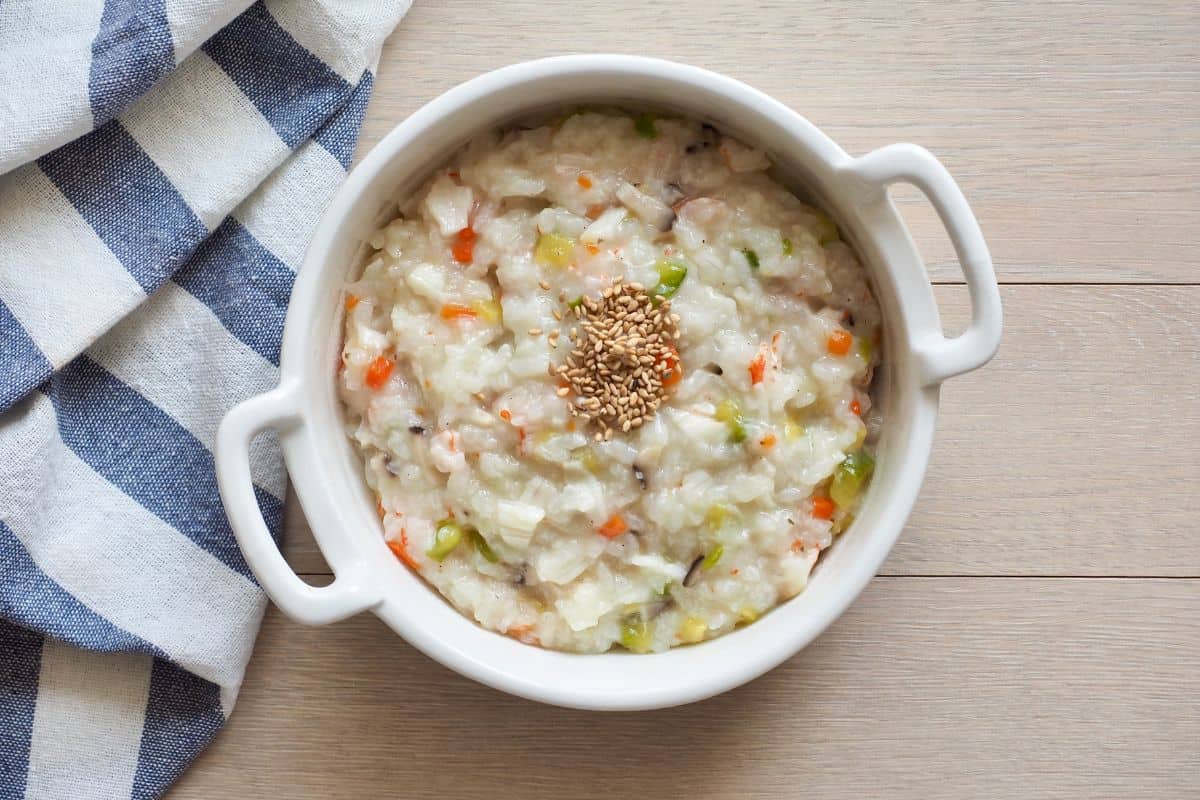
🍲 Cooking Methods: Traditional Stovetop to Modern Instant Pot
Traditional Stovetop
Cooking on the stovetop is a classic technique. It starts with soaking the rice, usually for about an hour. After that, the soaked rice is cooked with chicken, garlic, and ginger in a large pot. They stir occasionally to prevent sticking and maintain a smooth texture.
Stovetop cooking needs patience and attention. The heat is reduced to a simmer to let the porridge thicken slowly. It takes around 25-30 minutes for the rice to fully cook and soften.
Modern Instant Pot
With the Instant Pot, Korean porridge is made quicker and more convenient. This method combines rice, chicken, and other ingredients in the Instant Pot. After sealing the lid and setting the steam vent to the sealing position, they select the manual pressure cook setting and cook for about 20 minutes on high pressure.
The pressure cooker does most of the work, cutting the active cooking time. Once done, the chicken can be removed, shredded, and added back to the porridge.
Comparison Table
| Method | Advantages | Disadvantages |
|---|---|---|
| Stovetop | Traditional flavor, more control over texture | Less control over the final texture |
| Instant Pot | Fast, convenient, less hands-on | Less control over final texture |
Using either method, the goal is to achieve a creamy, comforting bowl of Korean porridge. The choice between traditional and modern techniques depends on time, convenience, and personal preference. Both methods have their unique benefits and can create a delicious meal.
😋 Classic Korean Porridge Recipe
Ingredient List
To make this delicious chicken porridge, you'll need:
- 1 cup of leftover rice
- 4 cups of chicken broth
- 1 chicken breast, cooked and shredded
- 1 small onion, finely chopped
- 1 carrot, finely minced
- 2 cloves of garlic, minced
- Salt and pepper to taste
- 1 tablespoon sesame oil
- 1 green onion, chopped (for garnish)
These ingredients are simple yet create a deeply flavorful porridge. Using leftover rice makes it easier and quicker to prepare.
Preparation Steps
Prepare the ingredients: Chop the onion, mince the carrot, and shred the chicken breast. Mince the garlic cloves.
Saute vegetables: Heat the sesame oil in a large pot over medium heat. Add the chopped onion, minced carrot, and garlic. Saute for 2-3 minutes until the vegetables are softened and fragrant.
Combine and cook: Add the leftover rice to the pot and mix well with the vegetables. Pour in the chicken broth and bring to a boil. Once boiling, reduce the heat and let it simmer for about 20 minutes, stirring occasionally.
Add the chicken: Add the shredded chicken to the porridge and continue to simmer for another 5-10 minutes until the porridge thickens to your desired consistency.
Cooking and Serving Tips
If possible, use homemade chicken broth for a richer flavor. If the porridge becomes too thick, add more broth or water to reach the desired texture.
Garnish with chopped green onion for added color and flavor. Some might also like to sprinkle sesame seeds on top. For those who enjoy a bit of spice, a dash of black pepper or a sprinkle of red pepper flakes can enhance the dish.
To save time, you can cook the porridge in an Instant Pot without sauteing the rice. Adjust the seasoning to taste before serving for the best results.
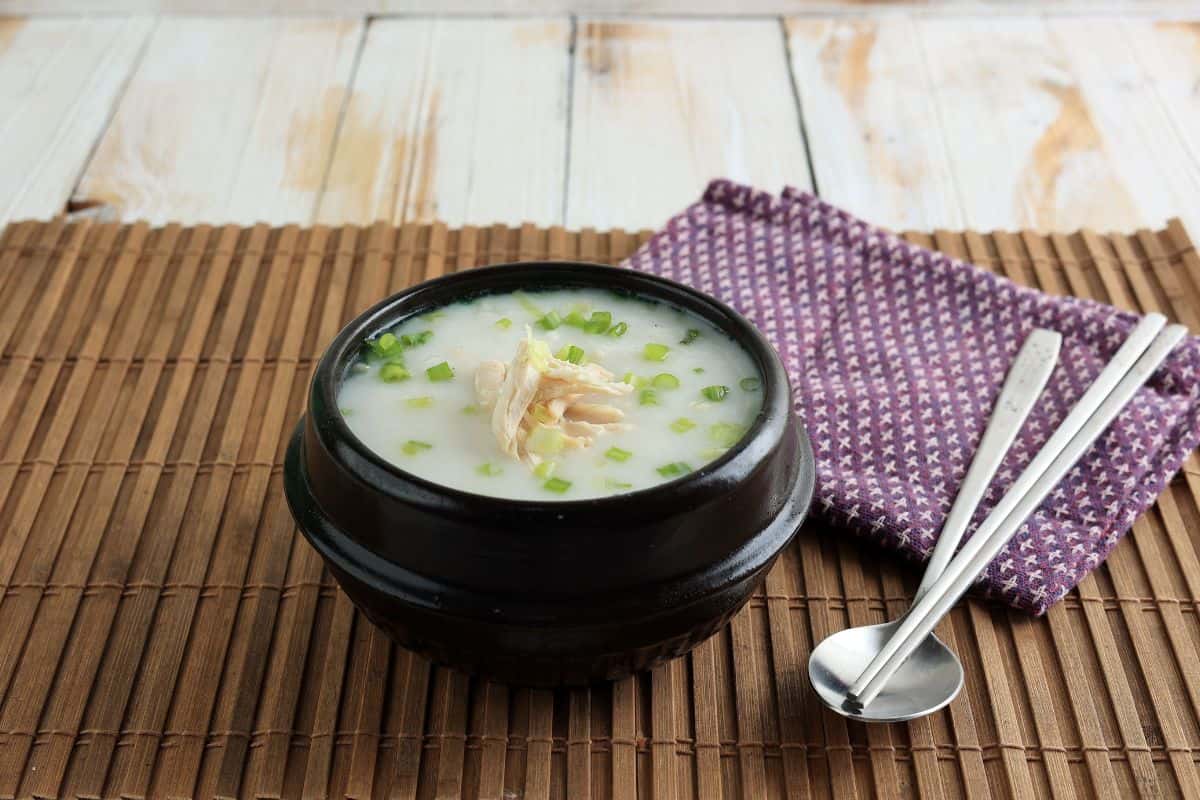
🥕 Customizing Your Juk: Variations and Add-ins
Vegetables
- Mushrooms: To add a savory depth, you can mix in sliced mushrooms.
- Green onions: Thinly sliced green onions add a fresh, peppery flavor.
- Zucchini: Diced zucchini gives a slight crunch and mild taste.
- Carrots: Finely chop some carrots for a pop of color and sweetness.
Proteins
Chicken is often the go-to for juk, but you can switch it up with other proteins.
- Tofu: For a plant-based option, add cubes of tofu.
- Seafood: Shrimp or crab can add a new layer of flavor.
Seasonings
Adding different seasonings can also help you make the juk your own.
- Soy Sauce: A splash of soy sauce can deepen the umami flavor.
- Sesame Oil: A drizzle of sesame oil adds a rich, nutty note.
Toppings
You can end with various toppings to make your juk extra special.
- Crushed Sesame Seeds: For a bit of crunch and flavor.
- Nori: This dried seaweed adds a touch of umami.
Sweet Variations
Juk isn't just for savory dishes. You can also go sweet.
- Fruits: Add in fruits like dates or jujubes.
- Nuts: Top with chopped nuts for extra texture.
Experiment with these variations to make your juk uniquely yours. By trying different combinations, you can create a new experience each time you make this comforting dish.
🥘 Pairing Juk With Other Korean Dishes
Banchan (Side Dishes)
- Kimchi: The spicy, tangy kick of kimchi complements the subtle taste of juk.
- Pickled Radish: Sweet and crispy, it's a refreshing contrast.
- Seaweed Salad: Light and savory, it adds a bit of umami.
Soups and Stews
- Kimchi Jjigae: This spicy, hearty stew can add depth and warmth to your meal.
- Miso Soup: Mild yet rich, it's a perfect side to a simple bowl of juk.
Proteins
- Grilled Fish (Saengseon Gui): The crispiness of grilled fish balances well with the softness of juk.
- Bulgogi: Sweet and savory marinated beef brings a delightful contrast to the dish.
Vegetable Dishes
- Korean Spinach Salad (Sigeumchi Namul): Lightly seasoned spinach offers a refreshing contrast.
- Stir-Fried Vegetables (Yachae Bokkeum): Colorful veggies add a nice crunch and variety.
📝 Storing and Reheating Tips
Storage
To store leftover Korean porridge, place it in an airtight container. It's best to store in the refrigerator where it can stay fresh for up to 3 days.
For longer storage, freeze the porridge. Freeze it in portions to make reheating easier. Use freezer-safe containers or bags to avoid freezer burn.
Reheating
To reheat, transfer the porridge to a saucepan. Add a bit of water or broth, as the porridge thickens when cold. Heat it over medium heat, stirring occasionally until it's warmed through.
Alternatively, use a microwave. Place the porridge in a microwave-safe bowl, cover it with a microwave-safe lid or plate, and heat it on medium. Stir every 1-2 minutes until hot.
Food Safety
Make sure to reheat the porridge thoroughly until it’s steaming hot. This ensures it’s safe to eat. If reheating frozen porridge, thaw it in the refrigerator overnight before reheating.
It's important not to leave porridge at room temperature for too long, as it creates the perfect environment for bacteria to grow. Always refrigerate or freeze leftovers promptly.
❓ Frequently Asked Questions
Traditional Korean porridge often includes rice, vegetables, and sometimes meat. Commonly, sesame oil and broth are used for flavor. Vegetables like carrots, zucchini, and mushrooms are added for extra nutrition.
To make a simple juk at home, soak rice for about an hour. Heat sesame oil in a pot, add the soaked rice, and stir-fry until translucent. Add broth, bring to a boil, then simmer until the rice is soft and thickened.
Vegetarian juk can include ingredients like pumpkin, mushrooms, and assorted vegetables. For instance, pumpkin porridge, or hobakjuk, is made by boiling peeled and diced pumpkin with rice until smooth and creamy.
Juk is a healthy meal option due to its simple, wholesome ingredients. It is easy to digest and often recommended for those who are ill or recovering. The use of vegetables and lean meats also makes it nutritious.
While both juk and congee are rice porridges, juk is thicker and often includes different seasonings, such as sesame oil. Congee is typically thinner and may use fish or soy sauce for flavoring. Each has its own unique ingredients and cooking styles.

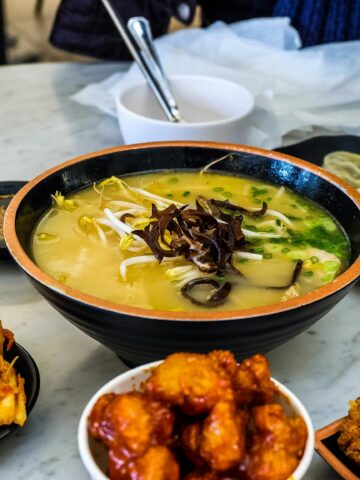
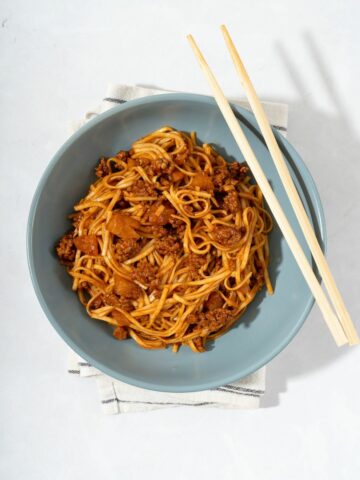
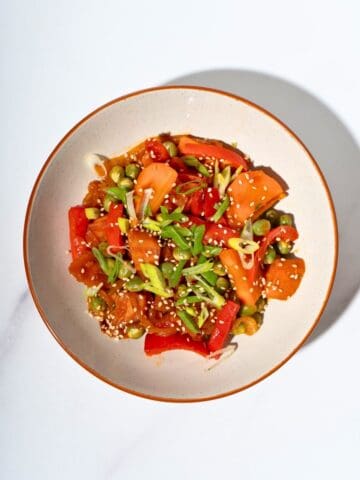
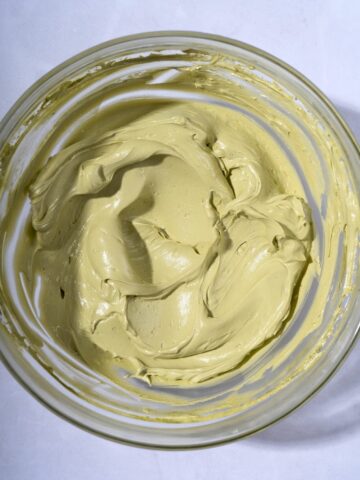
Comments
No Comments